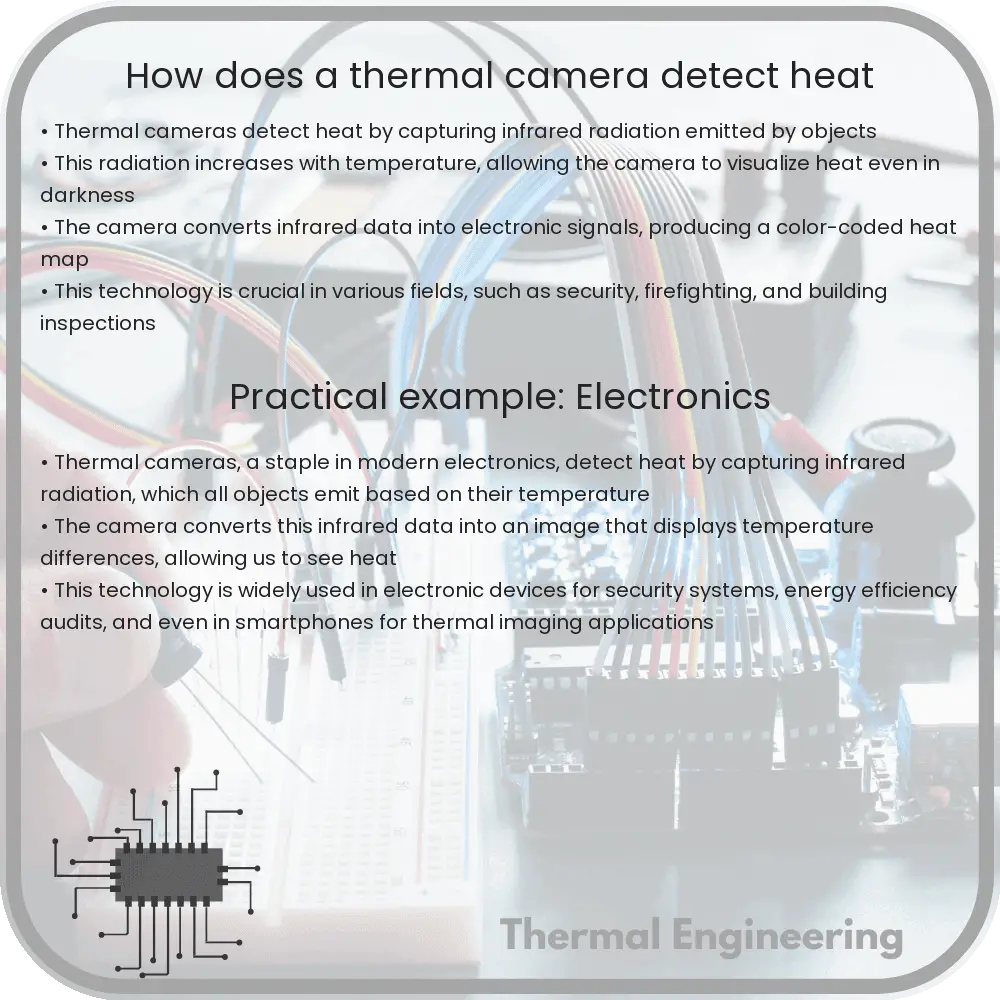Learn how thermal cameras use infrared technology to visualize heat in various applications like security and medical imaging.

Understanding How Thermal Cameras Detect Heat
Thermal cameras, also known as infrared cameras, are fascinating devices that allow us to see variations in heat. Unlike standard cameras that capture visible light, thermal cameras are designed to detect and visualize heat emitted by objects. This capability makes them invaluable in numerous applications including security, fire detection, building inspections, and medical imaging. But how do thermal cameras accomplish this?
Basics of Thermal Imaging
Every object emits infrared energy as heat. The amount of this energy depends on its temperature—the warmer an object is, the more infrared energy it emits. Thermal cameras are equipped with a special lens that focuses the infrared light emitted by all of the objects in view. The core of a thermal camera is its infrared detector elements, which are sensitive to different wavelengths of infrared energy.
These detectors are often made from materials such as vanadium oxide or amorphous silicon, which change their electrical resistance when exposed to infrared radiation. When infrared energy from a warm object hits the detector, it changes the temperature of the material. This temperature change alters the material’s resistance, which is then measured and processed to create an electrical signal.
Creating the Thermal Image
The electrical signals from the detector are then sent to the camera’s processor, where they are turned into a digital image. Each pixel in the image corresponds to a point in the detector and represents a temperature value. This temperature data is usually displayed in different colors to indicate different temperatures—cool areas might appear blue, warm areas might be red, and hot areas could be shown in white.
- Color Palettes: Thermal cameras often have multiple color palettes that can be used to enhance contrast in certain situations, helping the viewer identify temperature differences more easily.
- Resolution: The resolution of a thermal camera depends on the number of detectors in its array. Higher-resolution cameras can detect smaller temperature variations over longer distances.
Applications of Thermal Cameras
The ability of thermal cameras to see heat makes them incredibly useful in a variety of fields:
- Building Inspection: They can reveal heat leaks in buildings and faulty connections in electrical systems.
- Medical Diagnostics: Thermal imaging is used in healthcare to monitor blood flow and diagnose inflammation.
- Law Enforcement and Security: Thermal cameras improve visibility in dark conditions, providing crucial data not visible to the naked eye.
- Firefighting: They can help locate the source of fires and find hotspots that are not visible through smoke.
Conclusion
Thermal cameras are a prime example of how advanced technology can allow us to see beyond the limitations of human vision. By converting infrared radiation into visible images, these cameras provide us with immediate insight into the thermal characteristics of different objects, which can be crucial for both safety and efficiency in many industrial, commercial, and personal applications.
As technology progresses, the applications and capabilities of thermal imaging are likely to expand, opening up even more possibilities for its use in everyday life.